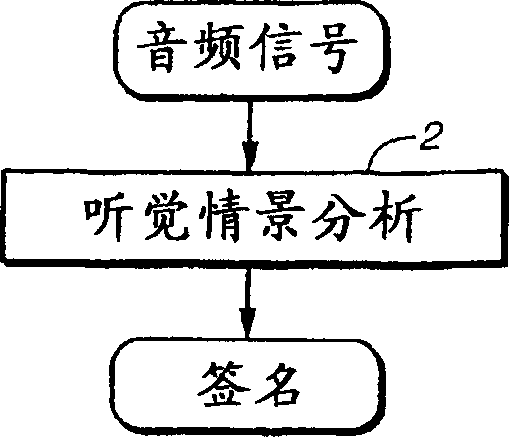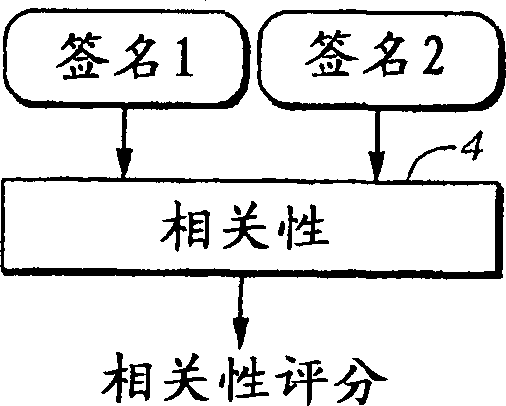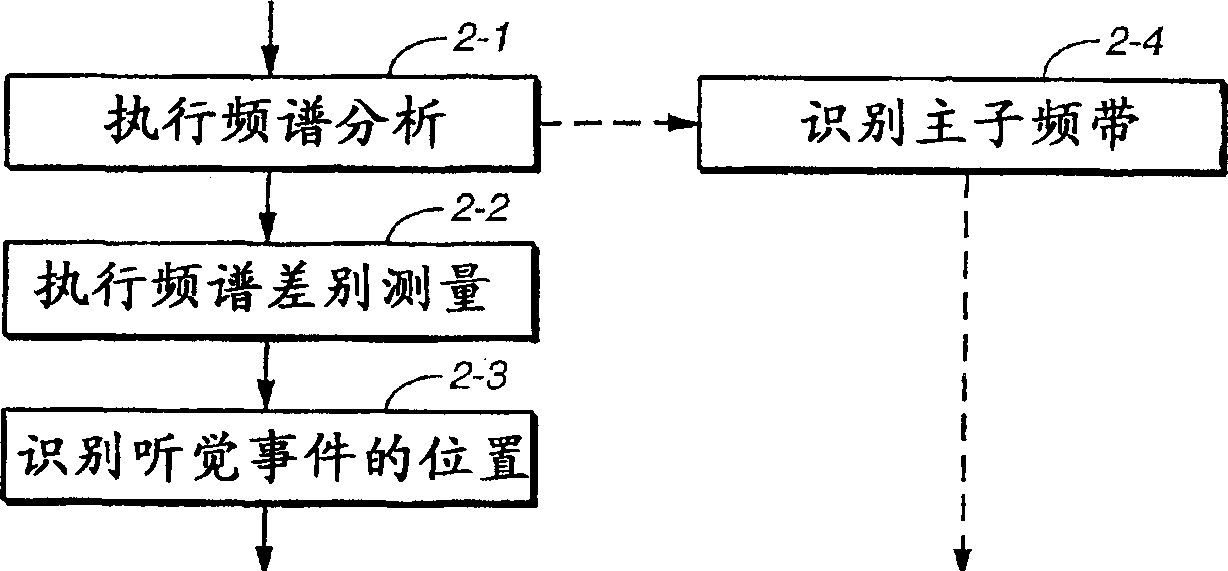Comparing audio using characterizations based on auditory events
A technology of auditory events and representation, applied in speech analysis, speech recognition, electrical components, etc., can solve the problems of audio signal analysis and characterization, and achieve the effect of high computational efficiency
- Summary
- Abstract
- Description
- Claims
- Application Information
AI Technical Summary
Problems solved by technology
Method used
Image
Examples
Embodiment Construction
[0031] In a practical embodiment of the invention, the audio signal is represented by samples processed in blocks of 512 samples, which corresponds to approximately 11.6 milliseconds of input audio at a sampling frequency of 44.1 kHz. A group length of less than the duration of the shortest perceivable auditory event (approximately 20 milliseconds) is desirable. The aspects of the invention are clearly not limited to such practical embodiments. The principles of the present invention do not require the audio to be arranged into sample groups prior to determining audio events, nor does it require that sample groups of constant length be provided if the audio is arranged into sample groups. However, to minimize complexity, a fixed group length of 512 samples (or some other power of two samples) is beneficial for three main reasons. First, it provides acceptably low enough latency for real-time processing applications. Second, the number of samples is a power of two, which is b...
PUM
 Login to View More
Login to View More Abstract
Description
Claims
Application Information
 Login to View More
Login to View More - Generate Ideas
- Intellectual Property
- Life Sciences
- Materials
- Tech Scout
- Unparalleled Data Quality
- Higher Quality Content
- 60% Fewer Hallucinations
Browse by: Latest US Patents, China's latest patents, Technical Efficacy Thesaurus, Application Domain, Technology Topic, Popular Technical Reports.
© 2025 PatSnap. All rights reserved.Legal|Privacy policy|Modern Slavery Act Transparency Statement|Sitemap|About US| Contact US: help@patsnap.com



